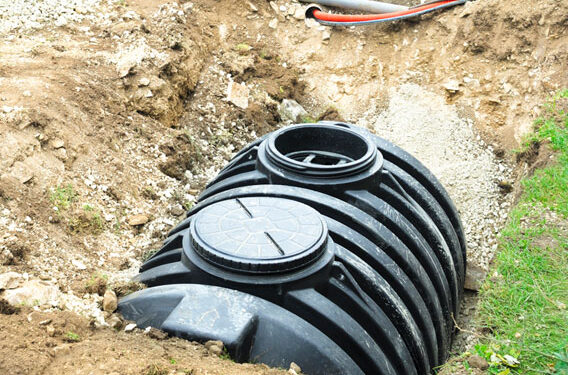Septic systems are one of the most important yet overlooked components of a home. Tucked away underground and often out of sight, they silently handle all your wastewater needs—until something goes terribly wrong. Regular septic service may not be at the top of your home maintenance checklist, but neglecting it can lead to extremely costly and messy consequences. From backups and foul odors to full system failure, the financial damage from poor septic maintenance can reach into the thousands. In this article, we’ll explain why routine septic service is critical, how it can prevent expensive repairs, and what every homeowner needs to know to keep their system in top shape.
Read more about Floor Sink vs. Floor Drain.
Understanding How Your Septic System Works
Before diving into the importance of maintenance, it helps to understand what a septic system actually does. A typical system consists of a septic tank and a drain field. Wastewater from your home flows into the tank, where solids settle at the bottom (forming sludge) and lighter materials like grease float to the top (forming scum). The liquid effluent in the middle then flows into the drain field, where it’s naturally filtered through soil.
Over time, the sludge and scum layers build up and can overwhelm the tank if they’re not pumped out regularly. When that happens, waste can back up into your home or seep into your yard—both of which are costly disasters. Regular septic service helps manage this buildup and ensures everything flows as it should.
The High Cost of Septic System Neglect
Neglecting your septic system may seem harmless at first, but the consequences can quickly become catastrophic. One of the most common issues homeowners face is septic tank overflow, which can cause raw sewage to back up into toilets, sinks, and even floors. Cleaning up sewage isn’t just disgusting—it can cost thousands of dollars and pose serious health risks.
Even worse, if the drain field becomes saturated due to an overfilled tank, you may need to replace the entire septic system, which can run anywhere from $10,000 to $30,000 depending on the size of your home and the soil conditions. Routine maintenance, on the other hand, typically costs only $200 to $500 every few years. That’s a small price to pay for avoiding a massive repair bill later.

Regular Pumping Keeps Your System Running Smoothly
One of the simplest yet most important septic services is pumping the tank. This involves removing the accumulated sludge and scum from the tank to prevent overflow and clogs. The general rule of thumb is to have your tank pumped every 3 to 5 years, but this can vary based on usage, household size, and tank capacity.
If your household uses a lot of water—think long showers, heavy laundry use, and multiple bathrooms—you might need to schedule pumping more often. Keeping up with this basic service helps your system process waste more efficiently and extends its lifespan significantly. Delaying it, on the other hand, puts you at risk for system overload and costly drain field repairs.
Routine Inspections Catch Problems Early
Regular inspections are another essential part of septic service that can save you money. During an inspection, a trained professional checks the septic tank level, looks for cracks or leaks, evaluates the condition of the drain field, and ensures that the baffles and filters are intact and functioning.
These inspections are like getting an annual physical for your septic system—they catch small issues before they become big ones. For example, a minor crack in the tank can be patched affordably if detected early, but if it goes unnoticed and spreads, it may require a full tank replacement. Investing in regular inspections (usually every 1 to 3 years) helps avoid surprises and lets you budget for any necessary repairs before they escalate.
Protecting Property Value and the Environment
A well-maintained septic system isn’t just good for your wallet—it’s also good for your property value and the environment. If you’re planning to sell your home, a failing septic system can be a deal-breaker. Potential buyers will almost always require an inspection, and a neglected system could reduce your home’s value or derail a sale entirely.
From an environmental standpoint, a malfunctioning septic system can contaminate local water supplies with harmful bacteria and chemicals. This not only violates local health codes but could also result in fines or mandatory system upgrades. Regular service helps prevent leaks and seepage, ensuring your home is compliant with environmental standards and safe for the community.
Warning Signs You Should Never Ignore
While regular service is key, it’s also important to know the early warning signs of septic trouble. Some common red flags include:
- Slow drains or gurgling toilets
- Foul odors near drains or outside near the tank
- Soggy or unusually green patches in your yard
- Water backing up into the house
- Lush vegetation over the drain field (a sign of nutrient-rich leakage)
If you notice any of these symptoms, don’t wait. Call a septic professional immediately. Addressing the issue promptly can be the difference between a $300 fix and a $10,000 replacement.
Best Practices to Extend Your Septic System’s Life
In addition to regular professional service, there are a few smart habits homeowners can adopt to keep their septic systems in good shape:
- Conserve water – Reduce water usage to prevent overloading the tank. Fix leaks and use water-efficient appliances.
- Avoid harsh chemicals – Bleach, drain cleaners, and antibacterial soaps can kill beneficial bacteria in your tank that break down waste.
- Watch what you flush – Never flush diapers, wipes, sanitary products, grease, or paper towels. Stick to septic-safe toilet paper.
- Spread out laundry loads – Doing multiple loads in one day can flood your system. Space them out over the week.
- Maintain your drain field – Don’t park or build structures over it. Keep trees away to avoid root intrusion.
These habits, combined with regular pumping and inspections, can help your septic system last for decades.
Conclusion
Many homeowners forget about their septic system—until it demands attention in the worst way possible. But with a little foresight and a commitment to regular service, you can avoid costly repairs, protect your home’s value, and enjoy peace of mind knowing your system is functioning as it should.
So, don’t wait for a sewage backup to force you into action. Schedule your next septic service today, and treat it as an investment in your home’s long-term health and financial stability. A few hundred dollars every few years can easily save you thousands—and a whole lot of stress.







